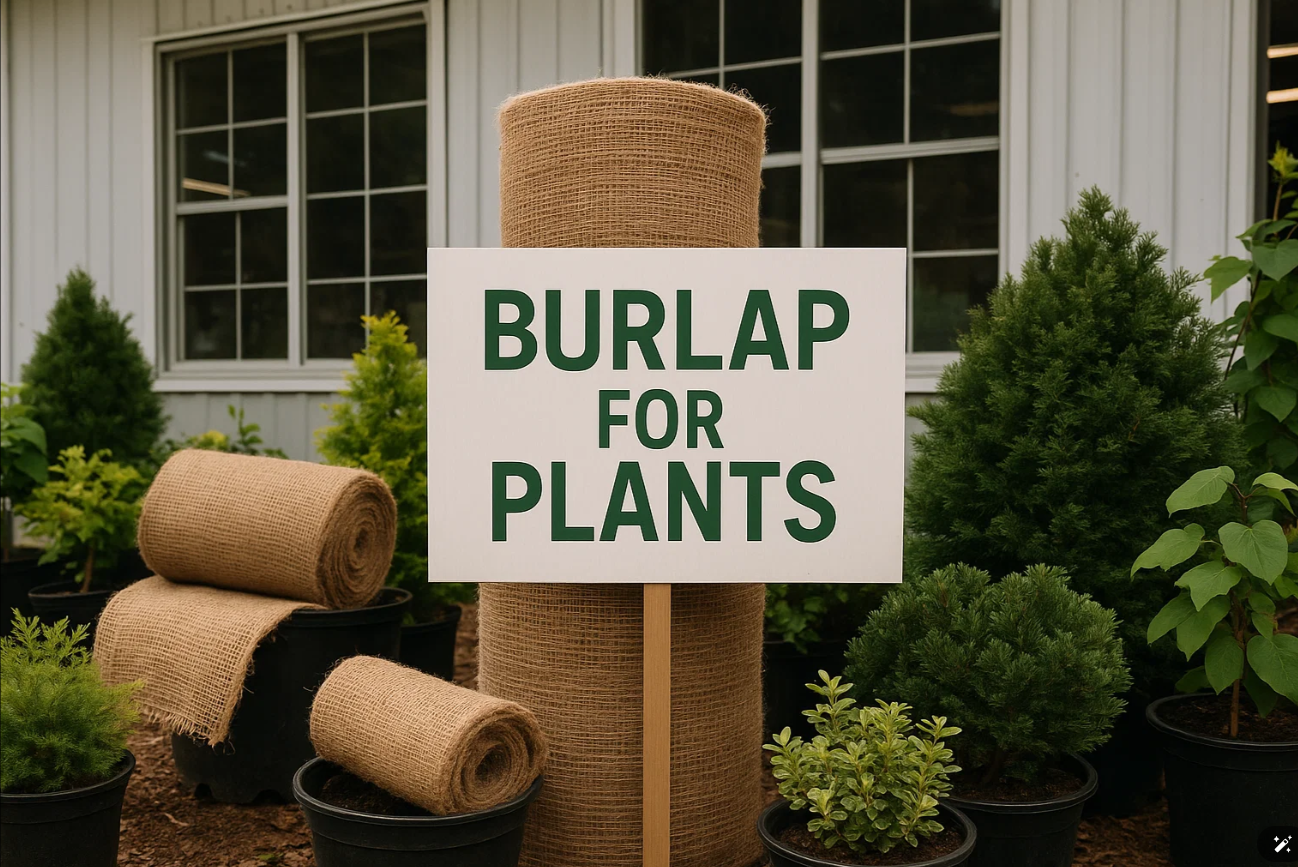- May 22, 2024
- Posted by: wellcoindustries
- Categories: Burlap, Erosion Control
Introduction
Burlap might look humble, yet for growers, contractors, and erosion-control specialists it works like a Swiss-army fabric—wrapping delicate root balls, shielding seedlings from windburn, and stabilising slopes until vegetation takes hold. The real challenge is not why to use burlap, but where to buy burlap for plants that meets professional specs without blowing the budget. Wellco Industries—a vertically integrated supplier of FRP, agricultural, and household materials—has spent two decades refining its burlap line and global logistics to help buyers solve exactly that problem.

Understanding Burlap’s Role in Plant Care
Why growers, contractors & conservationists choose burlap
Forestry trials published by the USDA show that seedlings wrapped with 7-ounce jute retained 18 % more moisture during transit than those left bare, boosting establishment rates by 12 %.*
“We treat burlap as cheap insurance—one torn wrap can cost a whole tree,” notes a Maryland landscaping supervisor with 15 years of transplant experience.
Key specs that matter (weight, weave, biodegradability)
Not all jute is equal. Weight per square yard (commonly 5–10 oz), thread count, and weave type dictate breathability and tensile strength. For root-ball wrapping, look for open-weave 7 oz cloth that biodegrades within 6–9 months. Silt-fence applications often demand tighter 10 oz fabric lasting a full growing season. Reputable vendors will quote ASTM D5034 tensile results; 7 oz cloth should exceed 175 lbf grab strength.
Buying Channels: Pros & Cons
Local retailers (garden centers, farm-supply stores)
When timelines are tight, brick-and-mortar outlets offer instant pickup and advice. Expect retail mark-ups—an April 2025 spot check in Illinois found 3-×-48 ft rolls at USD 15–18 each, roughly 35 % above pallet pricing.
Online marketplaces & specialty e-commerce sites
E-commerce widens selection and price competition. Amazon’s “landscape burlap” category lists 250 + SKUs, but quality control varies; check seller ratings and request spec sheets. Specialty suppliers like GreenhouseMegastore typically publish GSM and lab reports, making comparison easier.
Direct-from-manufacturer sourcing — how Wellco streamlines bulk orders
Wellco Industries combines jute-loom capacity in South Asia with U.S. and EU distribution hubs. Bulk buyers can lock factory-direct rates and reserve loom time ahead of seasonal peaks, trimming average landed cost by 22 % compared with spot purchases, according to 2024 customer audits.
Quality & Sustainability Checklist
Certifications, country of origin & fiber integrity tests
Look for OEKO-TEX Standard 100 or SGS pesticide-residue clearance to avoid chemical-treated cloth that could harm soil biota. Indian and Bangladeshi mills account for 90 % of global jute output; ask suppliers to disclose mill location and batch dates.
Durability vs. cost — data snapshot
A 2023 University of Guelph study tested three burlap weights under cyclic loading. Five-ounce cloth failed after 620 cycles, seven-ounce after 1 040, and ten-ounce after 1 480. Cost curves showed 7 oz delivered the best durability-per-dollar ratio for landscape use.
Environmental impact: biodegradation timelines & reuse tips
Jute is 100 % plant fibre. Buried samples in temperate soil lost 70 % mass in 16 weeks. To maximise reusability on short projects, dry the cloth between uses and store above ground. Afterward, shred and compost; the carbon-to-nitrogen ratio (~48:1) balances green waste.
Cost-Saving & Logistics Strategies
Bulk purchasing & pallet optimisation for large projects
Full pallets (48–60 rolls) reduce unit freight by up to 40 %. Stack rolls on end to shrink cubic volume; Wellco’s logistics team reports fitting 6 % more material per 20-ft container after switching to vertical bundling.
Shipping, lead times, and Incoterms for international buyers
Plan for a 4-week loom-to-dock window plus ocean transit. FOB and CIF are common, but savvy buyers consider DDP to offload customs complexity. Fuel-adjustment factors fluctuate monthly; locking rates on the day of booking can save 3–5 %.
Case study: mid-size nursery cuts burlap spend by 18 %
A Midwestern nursery (1 M trees/year) consolidated quarterly purchases into a single 40-ft HQ container. By aligning order dates with loom production and using Wellco’s Shanghai trans-loading hub, it shaved USD 0.06 per square yard—an 18 % annual saving.
How Wellco Industries Adds Value
Quote from Wellco product manager on vertical integration benefits
“Because we control the loom schedule, coating line, and North American warehouse, we guarantee spec consistency from the first yard to the last,” says Lin Zhang, Wellco’s burlap product manager.
Custom sizing, private-label/OEM services for distributors
Need 36-inch rolls for tree-spade crews or branded retail packs? Wellco offers slit-to-width and four-colour printing directly at the mill, eliminating secondary converters.
Post-purchase support: technical guidance & sample kits
Customers receive quick-start guides on correct wrapping tension and storage. First-time buyers can request complimentary swatch books covering 5–10 oz grades.
Conclusion
Smart procurement starts with clarity on application, specs, and supplier reliability. By weighing local convenience against factory-direct value—and applying the quality and logistics checks above—you now know where to buy burlap for plants that performs in the field. Ready for tailored pricing or samples? Connect with the agronomic team at Wellco Industries today.
Frequently Asked Questions
Q1. Can burlap be custom-cut to specific widths or shapes?
Yes. Manufacturers such as Wellco can slit rolls or die-cut squares, speeding up planting lines and reducing on-site trimming.
Q2. How long does untreated burlap last outdoors?
In typical temperate conditions, 7 oz jute begins breaking down after 3–4 months and fully composts within a year; heavy UV or moisture accelerates decay.
Q3. Is burlap safe for certified organic farms?
Pure jute that hasn’t been coated with synthetic sizing is generally OMRI-compliant. Always request documentation from your supplier.
Q4. What minimum order quantity unlocks factory pricing?
Many mills set the MOQ at one pallet (~1 400 m²), though aggregators can combine smaller orders into shared containers.
Q5. Can I import burlap under my own brand?
Absolutely. OEM buyers typically supply artwork files; the mill prints branded labels or banding during packing, streamlining retail launch timelines.
